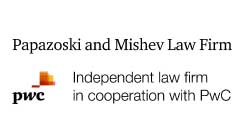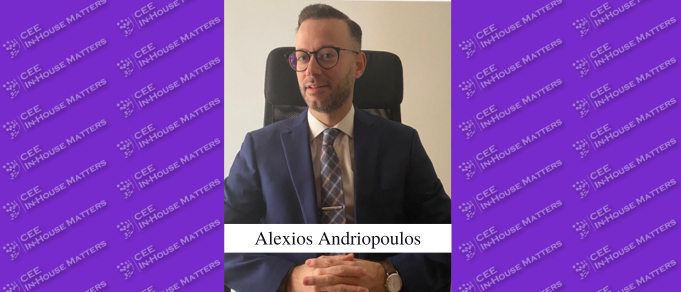Later this year, the European Parliament is expected to pass the Regulation on Foreign Subsidies distorting the Internal Market (FSR). CEE Legal Matters spoke with Schoenherr’s Volker Weiss, Johannes Stalzer, and Jan Kupcik to learn more about the new Regulation and its impact.
CEELM: Please walk us through the FSR’s genesis and goals.
Weiss: If you look at the big picture, the European Union has an EU state aid regime, allowing for tight control over subsidies granted by member states. Nothing comparable exists for subsidies granted by non-EU countries. There are some legal instruments, of course, but they are deemed to be narrow in scope or not effective. Over time, it was perceived as a gap in the regulatory toolbox, as companies in the EU considered themselves to be at a disadvantage against companies subsidized by third countries to finance their economic activities. These companies could offer lower bids in tenders and win, leading to distortions of competition in the internal market.
That is what this regulation tries to address – to patch a gap in the regulatory landscape and thereby achieve a level playing field within the internal market. The instruments root in the EU’s strategic goal to achieve “open strategic autonomy,” i.e., to be as open a market as possible but remain as autonomous as possible. To realize this, the internal market needs to be shielded from the negative influence of subsidized businesses.
The FSR is a competition tool. Its goal is to protect competition in the internal market. As such, it is agnostic to the nationality or ownership of businesses. In this vein, it also covers EU businesses that receive subsidies from a third country. And state-owned companies are equally within the scope of the regulation and can come under scrutiny.
CEELM: What were the specific problems leading to the creation of the FSR, and what issues does it seek to address?
Weiss: There was a perception that the level playing field in the internal market is threatened by foreign subsidies. European industry felt disadvantaged against state-supported businesses from third countries. The idea gained a lot of political momentum – if you look at the legislative genesis of the tool, it was an incredibly quick process coming out of Brussels. From the EU Commission publishing the proposal in May 2021 until political agreement was reached – by the EU Commission, the European Parliament, and the Council – it took only about 13 months. The instrument will likely be adopted by the European Parliament officially this year and come into force in mid-2023.
Kupcik: The EU already has an FDI regime, which targets foreign investments. However, this regime is rooted in security and public order issues. The new tool is primarily focused on protecting competition in the internal markets. For some transactions, the regimes are likely to overlap, but their aims are different. We believe that the new mechanism will be used frequently and will probably target subsidies to companies from state-led economies, such as China, more often.
CEELM: What are the new tools introduced by the regulation?
Kupcik: The new regulation introduces three tools: an M&A tool, a public procurement tool, and a general tool. The M&A tool targets large transactions where the parties are subsidized from third countries. The thresholds are conceptually quite close to the EU merger regulation. First, when the turnover of the target exceeds EUR 500 million and, second, when financial contributions from third countries to all parties combined exceed EUR 50 million in the last three years, the parties must notify the EU Commission. For the second threshold, the regulation targets financial contributions in a broad sense, including loans, the supply of goods, and granting of licenses, for example. The companies will have to track and report these contributions. The EU Commission will assess, in its investigation, if a contribution is a subsidy, which requires the contribution to be beneficial and selective. Once this is established, it will balance its positive and negative effects, and whether it distorts internal markets. The transaction cannot be closed without the EU Commission’s approval.
Stalzer: The FSR also introduces a public procurement tool. It was much needed and welcome, as experience has shown a significant need to address distortive foreign subsidies in public procurement. The reason is twofold: firstly, from an economic perspective, companies receiving foreign subsidies can submit underpriced bids for tenders. Secondly, there is also a political dimension, since many infrastructure projects are financed by EU funds to a certain degree – and due to foreign subsidies, we might end up paying foreign companies with European taxpayer money.
In terms of its scope, the public procurement tool is similar to the M&A one. It includes a notification obligation for tenders with a value over EUR 250 million – a high threshold compared to others in public procurement. The minimum threshold for foreign financial contributions is EUR 4 million in the last three years. If these thresholds are met, bidders and major subcontractors are required to notify the contracting authority of all foreign financial contributions received in the three years preceding that notification.
The EU Commission will, after receiving information from said contracting authority, assess whether the respective undertaking benefits from a foreign subsidy that distorts competition and, after a detailed review, either allow or prohibit the contract being awarded to such an entity. The tender cannot be awarded to the bidder without the EU Commission’s approval.
Kupcik: And finally, the general tool is an ex officio one. Through it, the EU Commission may potentially look into any market situation, including transactions or bids in tenders that don’t meet the abovementioned thresholds, as long as there are market distortion concerns. The proceedings before the EU Commission will include a preliminary review to collect information about foreign financial contributions, a check whether these qualify as a foreign subsidy, the application of a balancing test, and – if needed – the imposition of remedies.
Remedies might even include a request for the repayment of the subsidy. Such proceedings may start, for example, based on complaints filed by a disadvantaged company competing in the internal market.
CEELM: How will the new regulation impact CEE?
Weiss: This is an EU regulation and, thus, it will be solely enforced by the EU Commission. In CEE we have seen several infrastructure projects with the involvement of companies that appear to be backed by third countries.
In general, the FSR will add red tape for all companies doing business in Europe. Companies will have to track financial contributions from third countries, including the provision or purchase of goods or services, capital injections, grants, loans, etc. This will add a lot of routines and protocols for businesses, for compliance purposes.
Processes will also be prolonged and undergo EU Commission reviews. On the upside, the Union was missing a tool to address market distortions. The FSR will allow companies to challenge unfair competition coming from subsidized businesses.
Stalzer: It will create an additional administrative burden, especially for infrastructure tenders, considering that they have very specific timelines. The regulation might add 100 days or more to the process. Another administrative burden stems from the FSR applying not only to bidders but also to major subcontractors, i.e., subcontractors being awarded at least 20% of the contract value. Finally, it creates higher risks for prolonging processes, as unsuccessful bidders might try to challenge the tender process citing FSR infringements.
CEELM: What are your expectations for the enforcement of the FSR?
Kupcik: Even though the thresholds are quite high for the M&A and public procurement tools, they might still result in tens of cases being initiated every year. We expect to have even more coming from the general tool.
Weiss: To give a sense of magnitude, it is envisaged that 145 full-time EU official equivalents will be allocated to the enforcement of the regulation, with a EUR 90 million budget until 2027, a sizable amount of resources. Above that, the Directorate-General for Competition will be in charge of enforcing the FSR. This is the same directorate that is in charge of competition law enforcement, including cartel investigations, merger control, and state aid, known to be both diligent and aggressive. We expect to see quite a lot of engagement coming from their side.
This article was originally published in Issue 9.10 of the CEE Legal Matters Magazine. If you would like to receive a hard copy of the magazine, you can subscribe here.






















